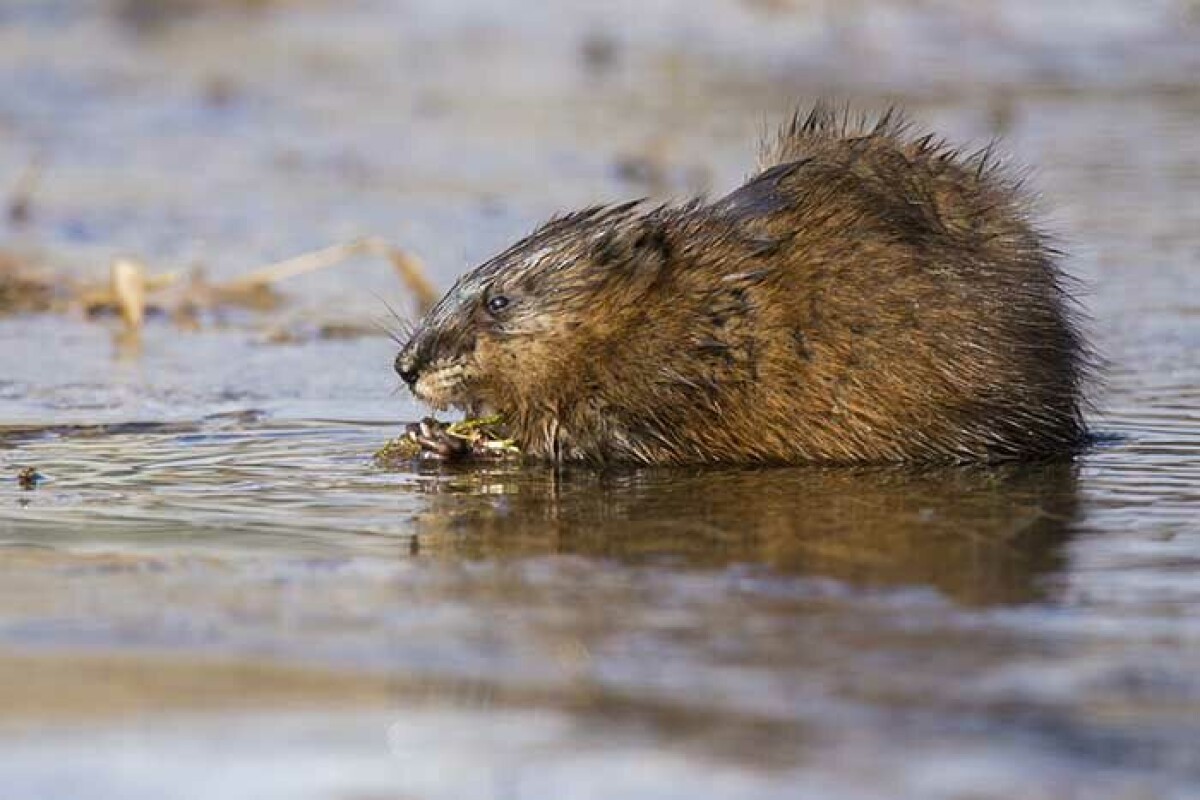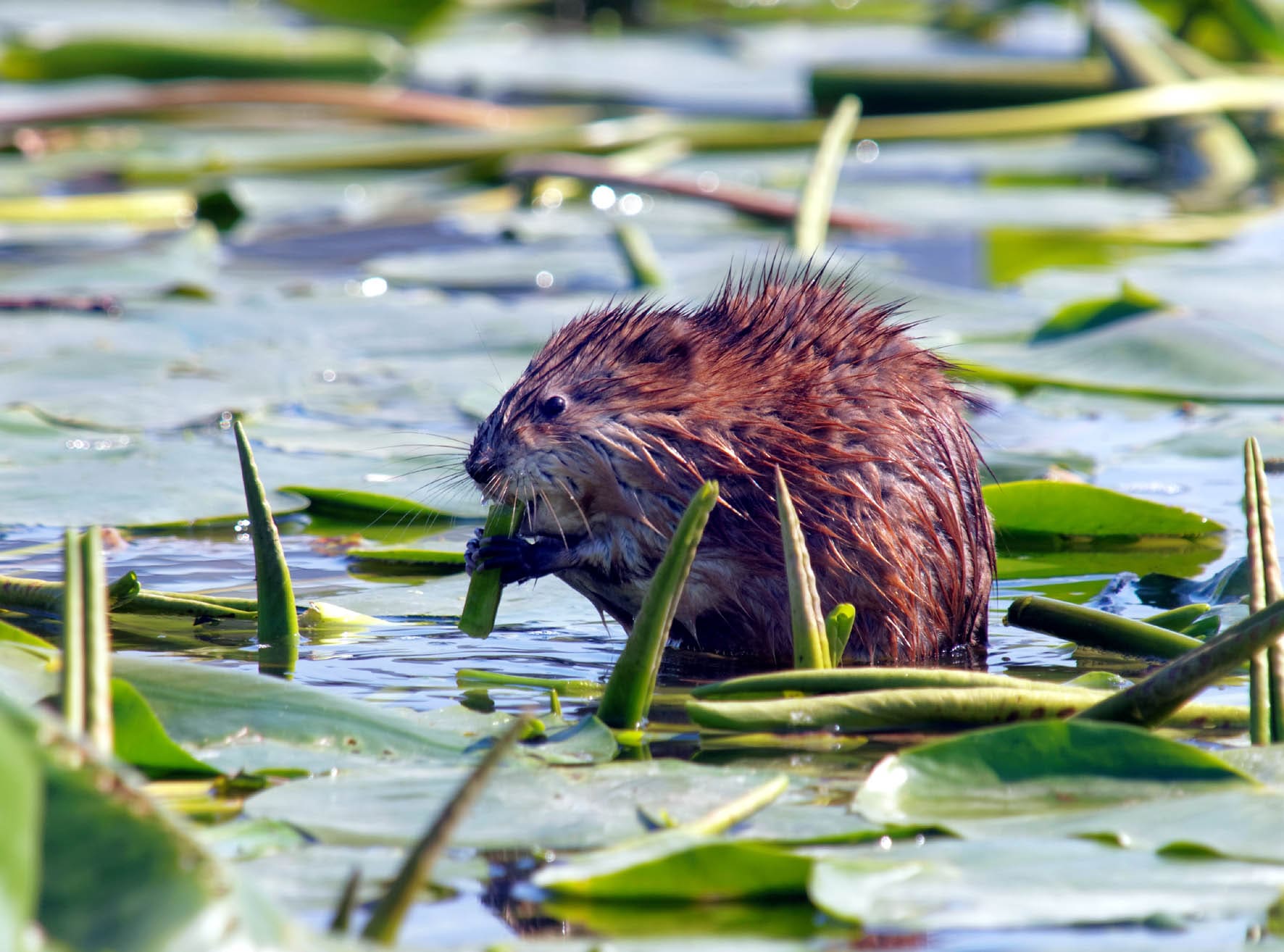Muskrat


Characteristics:
The muskrat is a medium-sized semi-aquatic rodent, resembling a small beaver but with a laterally flattened tail (side to side, not vertically like the beaver’s). Body length 30–40 cm, tail 20–25 cm, weight 1–2 kg. It has a dense, waterproof brown to dark-brown fur with a lighter underside. The head is blunt with small ears and a short nose.
Habitat:
Native to North America, the muskrat was introduced to Europe in the early 1900s. In Sweden, it is found mainly in the northern regions, though populations fluctuate from year to year. It prefers lakes, ponds, calm rivers, wetlands, and ditches with abundant vegetation.
Behaviour:
Muskrats are nocturnal and crepuscular (active at dusk and dawn) and are well adapted to aquatic life. They are excellent swimmers and divers, capable of staying underwater for up to 15 minutes. They build lodges from vegetation or burrows in riverbanks, always with underwater entrances for protection from predators.
Diet:
Primarily herbivorous, feeding on reeds, cattails, sedges, water lilies, and roots, but occasionally consuming crayfish, snails, and mussels. Typical feeding sites, or “feeding platforms,” can often be seen as piles of chewed vegetation near the water.
Reproduction:
Breeding occurs from March to September. The female produces 2–3 litters per year, each with 4–8 young. Gestation lasts about 30 days. The young are born fully furred and become independent after 5–6 weeks.
Tracks and signs:
- Tracks: Five-toed prints, sometimes accompanied by a tail drag mark on mud or snow.
- Lodges: Built from reeds and mud, similar to small beaver lodges, often in shallow water.
- Droppings: Small, dark, cylindrical pellets found on stones, logs, or floating vegetation.
- Feeding sites: Small piles of gnawed plant stems near the water’s edge.
Distribution:
After its introduction, the muskrat spread rapidly throughout northern and eastern Europe. In Sweden, it occurs mainly in Norrland. Populations may decline after harsh winters or disease outbreaks.
Hunting:
Muskrats may be hunted for fur or population control, as they can damage dikes, dams, and embankments through burrowing. Hunting is conducted using small-calibre rifles (class 4) or shotguns.
Firearm class (Sweden):
Muskrat hunting may be carried out with class 4 rifles or shotguns.
Think for the hunting exam:
- North American species introduced to Sweden in the 1900s.
- Smaller than the beaver, with a side-flattened tail.
- Builds lodges and burrows along water edges.
- Mainly eats aquatic plants.
- Hunted with class 4 rifle or shotgun.
- Can cause damage to dams and embankments.
